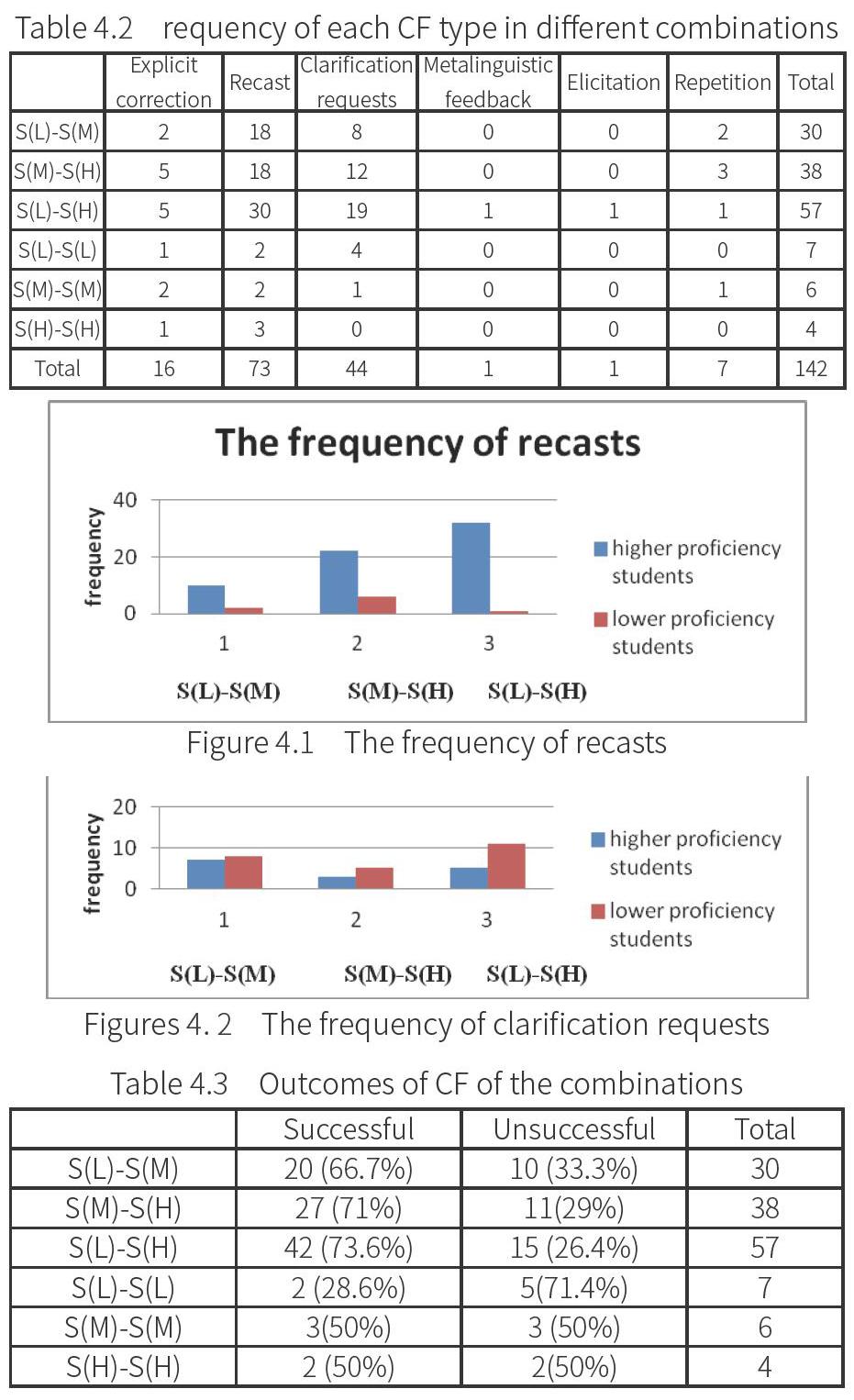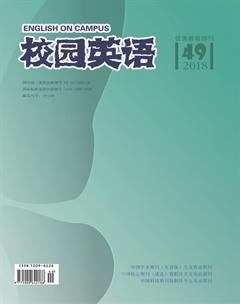An Empirical Study on Corrective Feedbackin Student—student Dyadic Interaction in EnglishSpeaking Classrooms
程颖 陈军



【Abstract】Corrective feedback(CF), as an important form in the interaction process, is the key to stimulate negotiated interaction to promote the second language development. The study adopts a pretest-treatment-posttest design with 30 senior high students as participants, whichpresents an in-depth analysis of CFin English speaking classrooms for senior high students in China. The key issue is whether CF differs quantitatively and qualitatively in different combinations in the aspects of their frequency, their outcomes and their effects.
【Key words】negotiated interaction; correct feedback; English speaking classrooms; English speaking competence
【作者簡介】程颖(1982.06-),女,汉族,华南师范大学在职硕士研究生,任教于广东省湛江市第二十中学,研究方向:高中英语教学;陈军(1977.10-),男,汉族,广东外语外贸大学英语本科毕业,中山大学硕士研究生,研究方向:教育管理。
1. Introduction
The Interaction Hypothesisstates that the development of language proficiencyis promoted by face-to-face interaction and communication. To answer the question how students can best be assisted viaclassroom interactions in becoming more target-like language, I sought to show how corrective feedback (CF)provided during negotiated interactionshapes interlanguagedevelopment.
2. Literature Review
There was a great body of study related to CF, butproblemsarose when adapted to the teaching and learning environment in China.So, this study explores theiroccurringin student-student interaction in English speaking classroom, which is hoped to find a more effective and practical way of administering CF.
3. Research Design
3.1 Research Questions
In this study, I explore several questions related to CF:
(1) How frequent is CF in Groups?
(2)Dose CFdiffer qualitatively and quantitatively in different combination of interactions involving different proficiency levelsofstudents?
(3)Can CF promote studentsspeaking competence development?
3.2 Participants
The participants are30 students with different proficiency levels, low, middle and high English, who are senior high students. They form groups, combinations and dyads.
4. Results and Data Analysis
4.1 Data Summary of CF in Groups
Table 4.1 showed that five CF strategies were used by students, explicit correction, recast, clarification requests, elicitation and repetition. Among them, recast and clarification request were the two most frequently used (at rate 39.5% and 31.5% respectively) and metalinguistic feedback had not been used.
4.2 Data Summary of CF inDifferent Combinations
Quantitative Analysis.Table4.2summarized the number of each CF type used. Recast and clarificationwere the two most frequently used typesof CF, while metalinguistic feedback,elicitationand repetition were less used.
Qualitative Analysis.We focused on two questions:(1) who initiated CF; (2) outcomes of CF in six combinations.
Figure 4.1 and Figure 4.2 showed clear differences as to who initiated CF depending on the proficiency level of the students. It showed that the students of higher proficiency level in all combinations consistently showed higher frequency of initiating recasts while this situation was reversed with clarification request.
Table 4.3 presentedthe outcomes of CF in combinations.S(L)-S(H) combination had the highest success rate (73.6%) followed by S(H)-S(M)(71%), and then S(M)-S(L)(66.7%). S(L)-S(L) was left behind.
4.3 English Speaking Competence Development through CF
Look at outcomes of CF on grammatical errors. Table4.4demonstrated that all the students made a decrease in their error rates as they progressed through the sessions of treatment.And two SL made a dramatic decrease in their error rates.
5. Conclusion
From the research above, I learn thatthe students tended to use CF to maintain theirflow of interactionwhile interacting, butCF was different in different combinationsqualitatively and quantitatively. Better CF outcomes occurred in the interaction between students of different proficiency level. Moreover, there was a link between CF and students English speaking development.
References:
[1]Allwright,R.The importance of interaction in classroom language learning[J].Applied Linguistics,1984,5:156-171.
[2]Boulima.J.Negotiated Interaction in Target Language Classroom Discourse[M].Amsterdam: John Benjamins Publishing Company,1999.
[3]Bower,J.&Kawaguchi;,S.Negotiation of Meaning and Corrective Feedback in Japanese/English eTandem[J].Language Learning & Technology,2011,15:41-71.
[4]Ferguson,C.A.Absence of Copula and the Notion of Simplicity:A Study of Normal Speech,Baby Talk,Foreigner Talk and Pidgins[M].Cambridge:Cambridge University Press,1971.
[5]Di Biase,B.Second Language Acquisition Notes and Exercises[M]. Sydney:Language Australia,2000.

